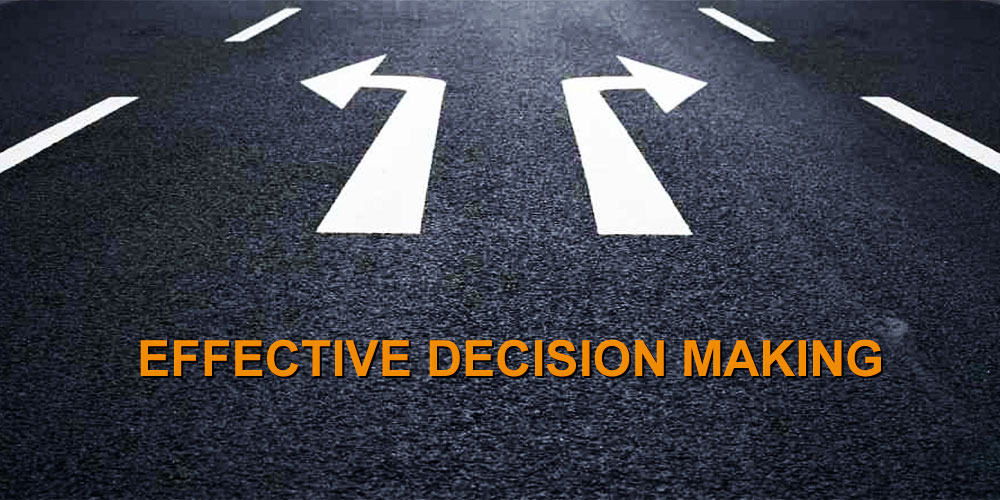Making more progress – to accelerate progress look at how you make decisions.

Leaders make many decisions each day. Decisions that range from simple things such as what tie or dress to wear, to more strategic matters such as where to invest, what product to launch and how to address falling margins.
It’s comforting to think that our brain, with its vast capacity for processing streams of information, is infallible. The truth is it’s highly fallible – and it can often fail when it’s most needed.
In particular, during times of change and uncertainty when the need for good decision making is essential to good organisational outcomes.
Why? Because we make decisions on hunches and gut reactions – letting past experiences create assumptions about how things should be and therefore how we should respond today. The danger with this approach to decision making is that it can be filled with blind spots and bias.
The pre-frontal cortex, which is the part of the brain that’s involved in thinking, analysing and reasoning, gets tired easily.
Consequently, the brain, very cleverly, has found a way of conserving energy. It takes short-cuts; and a mental short-cut is known as a heuristic. The brain uses heuristics to make big things and complex issues easier to manage, and ultimately remember.
As the brain takes in new information it tries to make sense of it, so that it knows what it needs to do. To ease the cognitive load this processing takes, it compresses information and sorts it into patterns. It looks for things that it’s seen or experienced before and goes – “I now know what to do”.
Of course, the brain’s short cutting process isn’t always reliable. For example, the brain may expect to see something in a certain way, and so it will seek out information to validate that view. It filters out information that doesn’t fit with its view of the way things should be and it can be easily influenced.
Consequently, it’s easy for a person to close their mind to new information that may be relevant to helping them make a better decision.
For simple decisions with little or no consequence it’s sensible to not devote too much of the brain’s capacity to making the decision.
However, for leaders facing unchartered territory relying on what they have always done before and using default thinking patterns is fraught with danger.
The recently released Centre for Workplace Leadership’s Study of Australian Leadership found that Australian organisations should be concerned about the state of leadership and management capability. For example, it found that many senior leaders do not draw on strategic advice in making decisions about the future.
Failing to draw on outside and broad expertise means that leaders are often taking a myopic and narrow perspective on transformational challenges.
In a world of increasingly complexity and ambiguity it’s essential that leaders know how to make good decisions to ensure good organisational performance.
Making good decisions involves taking deliberate steps to avoid falling into the trap of default thinking. This includes adopting practices such as:
- Deciding how to decide based on the simplicity, complexity or adaptive nature of the challenge being faced
- Setting a clear decision making process which is open to debate and challenge
- Testing multiple hypothesis and developing diverse scenarios to challenge dominant views and the status quo
- Not just looking for evidence to support ideas, but looking for data that disproves it
- Widening the frame of reference to include people not involved in earlier discussions and sourcing data from diverse sources
- Encouraging debate and welcoming a range of views, including listening to the silent minority and outlier opinions
- Considering both ends of the spectrum in terms of the range of possible outcomes
Good decisions are at the core of organisational performance. If an organisation wants better outcomes they need more robust decision making processes and leaders capable of making good decisions.
Have you read?
Five Ways to Keep Your Brain Young
Introverts vs Extroverts: how to manage and get the best from each
25 Best Universities In Europe: Oxford, Cambridge, Imperial College, And ETH Zurich Tops 2016-2017 Rankings
Leadership Fundamentals That Every CEO Should Know
Written by: Michelle Gibbings, a change and leadership expert and founder of Change Meridian. Michelle works with leaders and teams to help them accelerate progress. She is the Author of ‘Step Up: How to Build Your Influence at Work’.
Bring the best of the CEOWORLD magazine's global journalism to audiences in the United States and around the world. - Add CEOWORLD magazine to your Google News feed.
Follow CEOWORLD magazine headlines on: Google News, LinkedIn, Twitter, and Facebook.
Copyright 2025 The CEOWORLD magazine. All rights reserved. This material (and any extract from it) must not be copied, redistributed or placed on any website, without CEOWORLD magazine' prior written consent. For media queries, please contact: info@ceoworld.biz








